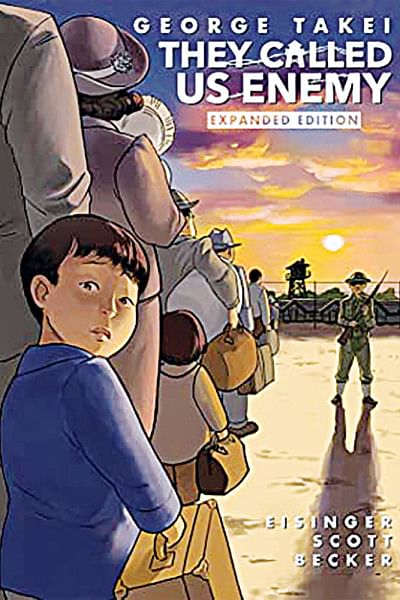The Trauma of Identity

A cursory search on George Takei on the internet will lead you to many funny videos, comic roasts, his famous Star Trek moments and, most importantly, his TED talk on "Why I love a country that once betrayed me". George Takei, a man famed for his "Oh My" dialogue and his breakout role as Sulu in Star Trek, has for years campaigned to educate Americans and the world on a crime rarely printed in history books: the internment of Japanese Americans during World War II.
George Takei's visceral and heart-wrenching graphic memoir The Called Us Enemy (Top Shelf Productions, 2019) brings to light this event. In 1942, right after the attack on Pearl Harbor by Japan, the then American President Franklin D Roosevelt signed an executive order stating that every person of Japanese descent on the west coast should be rounded up and shipped to one of ten "relocation centres", and seen as "enemies of the state." Co-written with Justin Eisinger and Steven Scott, and illustrated by Harmony Becker, Takei's book dives deep into this cold, dark heart of America's perceived multiculturalism. We follow four-year-old George Takei and his family as they are forced into concentration camps during WWII along with 120,000 law-abiding American citizens, because of their Japanese ancestry.
The book goes on to use tear-inducing scenes of dislocation, heartbreak, and violence interspersed with the memories of a young and innocent narrator. The manga-inspired artwork focuses intently on faces and body language, allowing for a closely knitted synchronization of text and image.
What makes this memoir particularly jarring is that it is viewed primarily through the eyes of children, who take centre stage as Takei and others of his generation grapple with their families' pain and the "true ideals" of his country that were betrayed. In black and white art form coupled with striking prose in the forms of soliloquies, dialogue, and speeches, Takei weaves a narrative filled with anger, grief, and the energy of childhood. At the same time, he shows the light at the end of the tunnel—he highlights his trajectory into becoming a Japanese-American pop culture icon who has tried to navigate his identity, alongside his firm hope that American democracy will not make the same mistakes it once did in its yesteryears. A beautiful moment in the book arises when Takei comes face to face with Eleanor Roosevelt and Martin Luther King Jr as the fight for African Americans' civil rights heats up in the 1960s.
Now more than ever, the graphic novel is relevant as America hopes to leave behind the era of Trump, in which migration from Muslim states was banned and detention camps were set up for so-called illegal migrants, an era in which currents of nationalism engulf the world we live in.
Israr Hasan is a contributor.

 For all latest news, follow The Daily Star's Google News channel.
For all latest news, follow The Daily Star's Google News channel. 



Comments